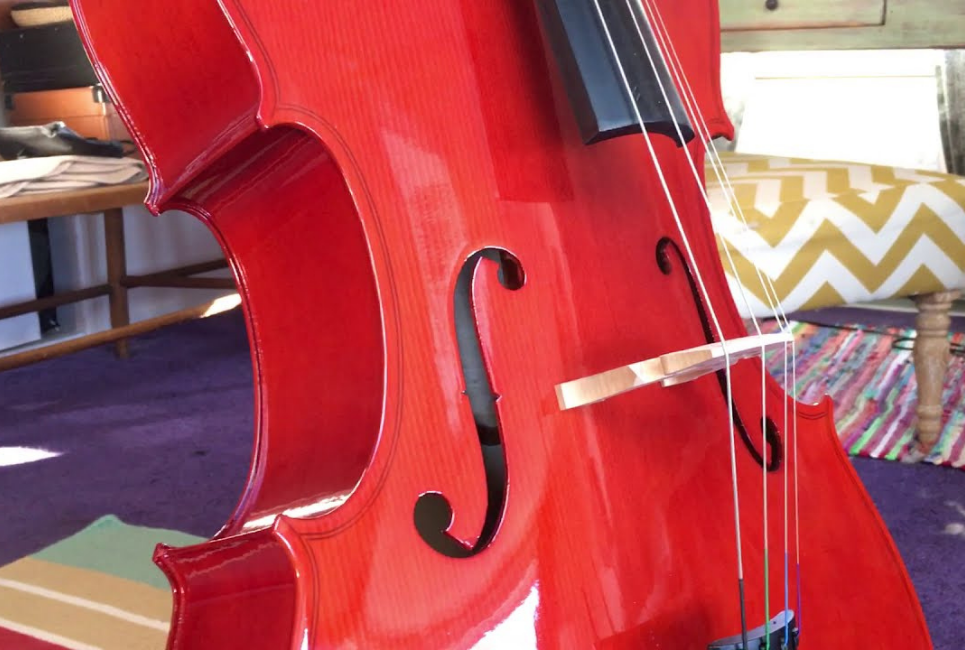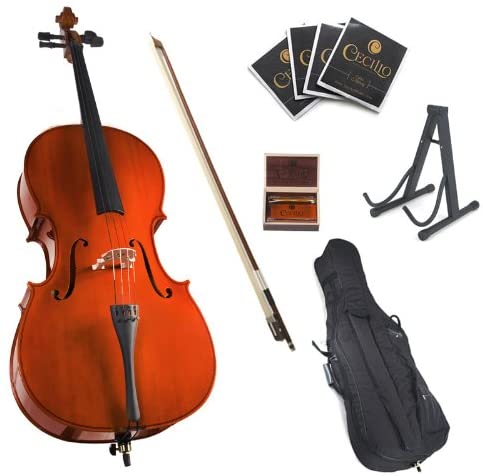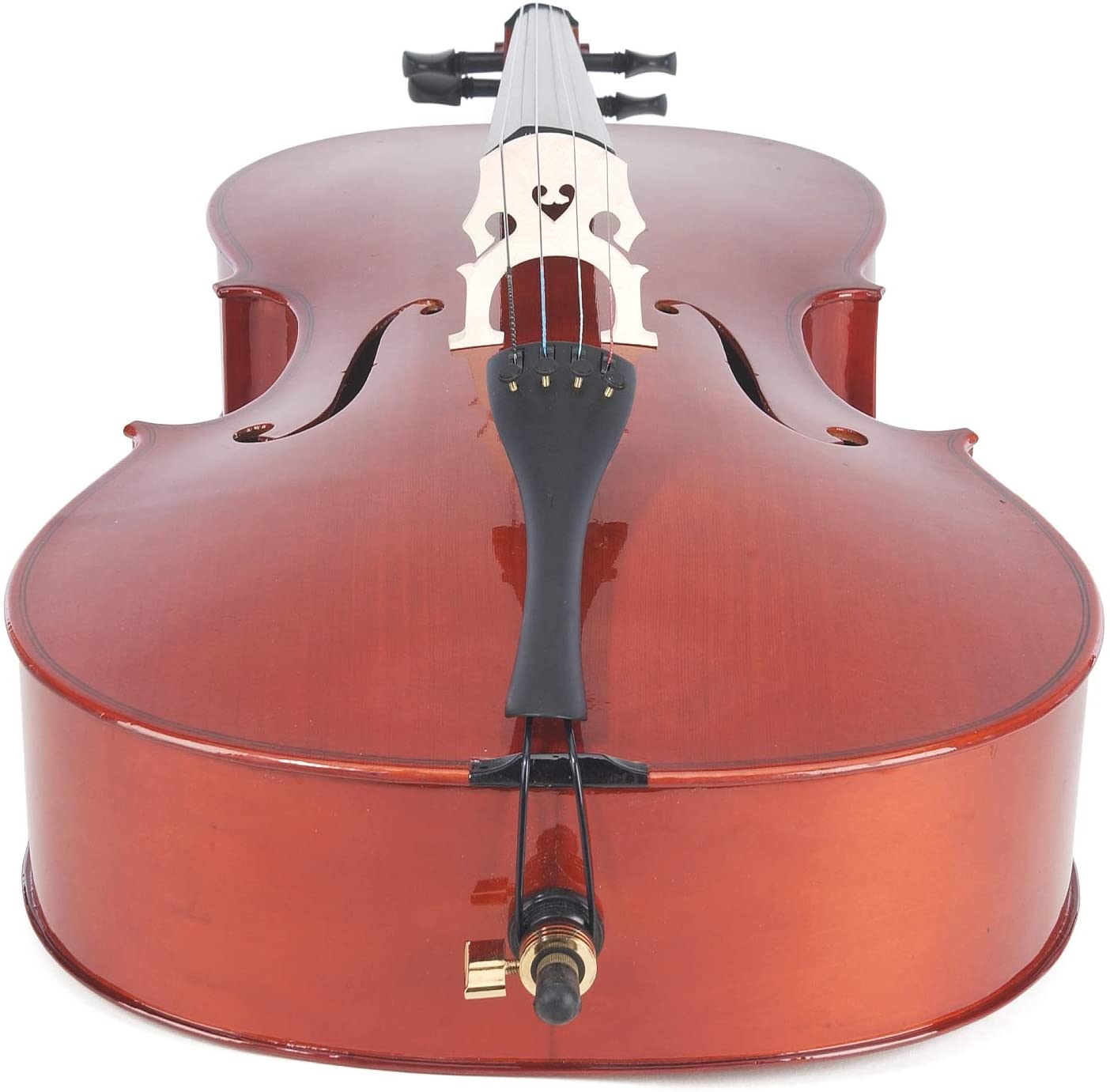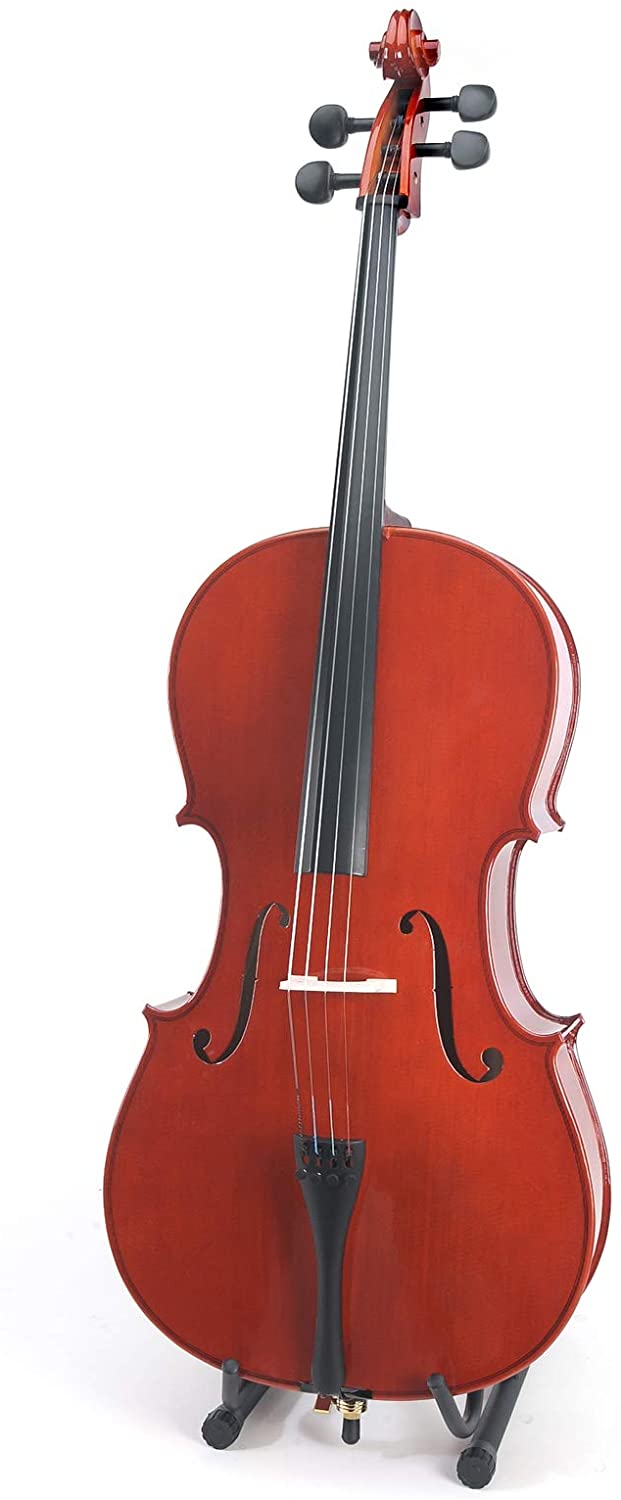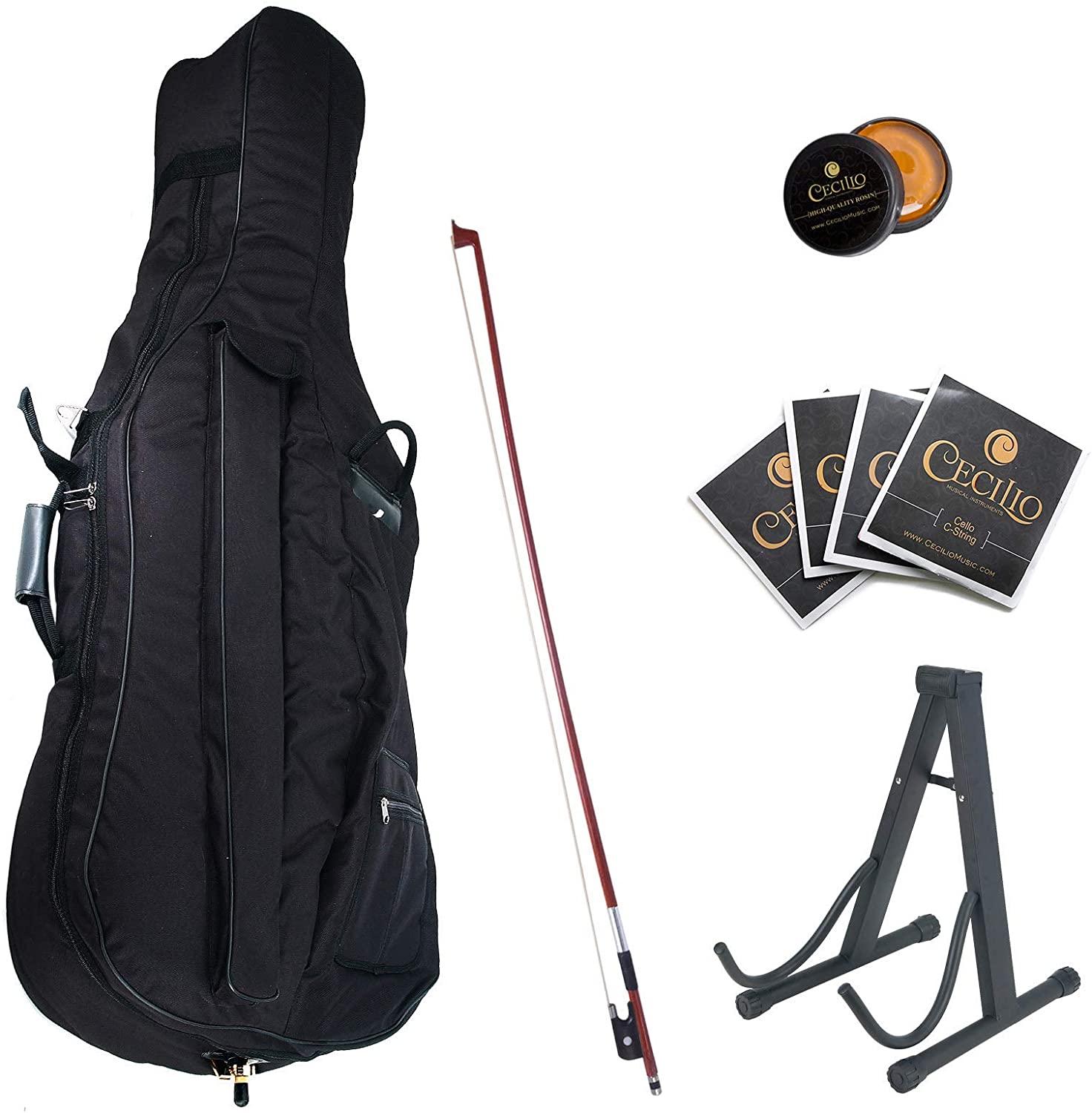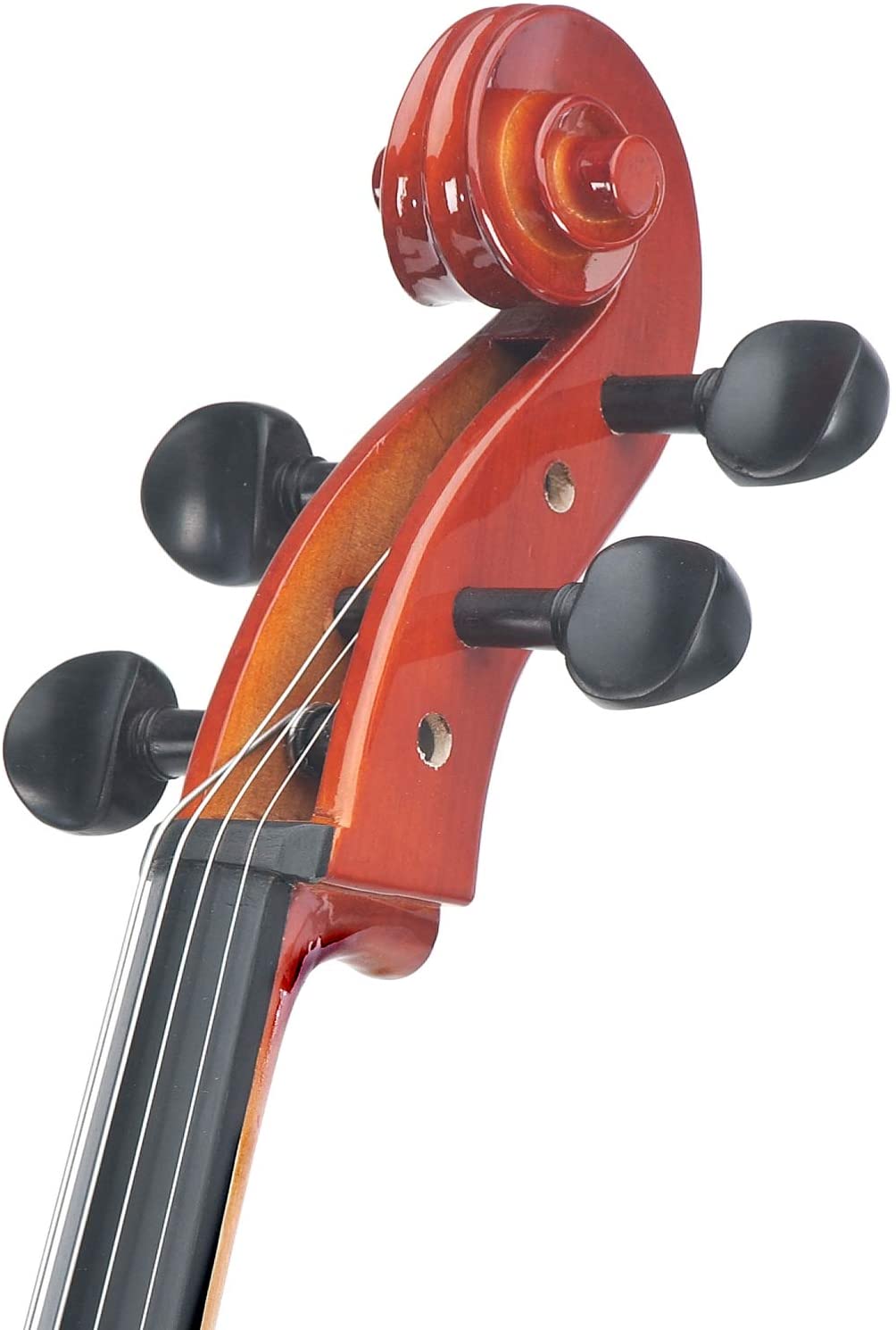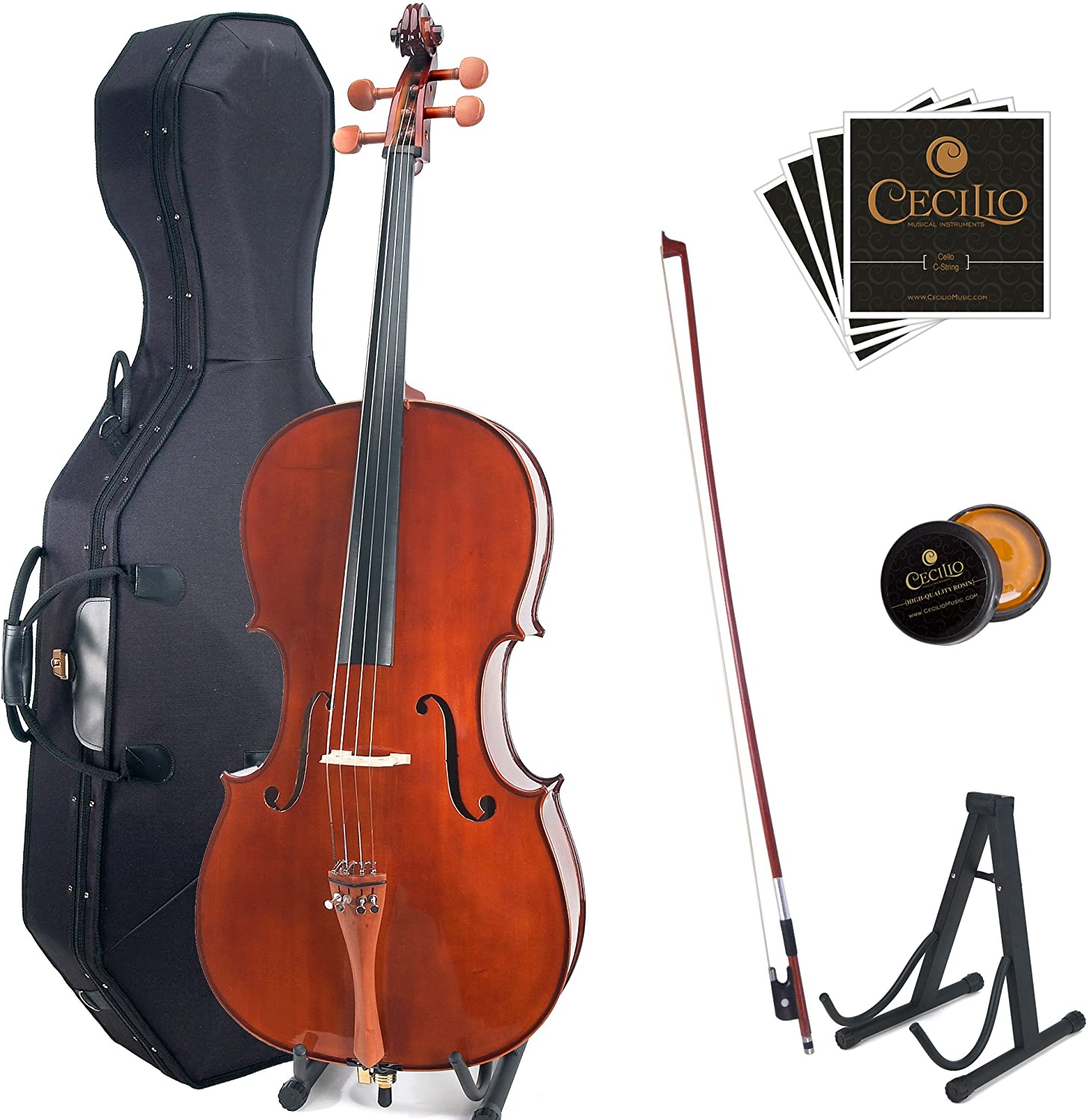- Best Violin Stand Options Guide - May 26, 2022
- Best White Violin Options - May 22, 2022
- How to Find the Best 7/8 Violin - May 19, 2022
Purchasing your first cello can be a seriously daunting task, especially when there is so much conflicting information available online.
There are so many brands and beginner bundles that I see getting recommended, so how are you supposed to know which one is the best for you? Well, the best way to figure this out is to look at each option individually, and one example that is worth checking out is the.
Never heard of it? Great, you’re in the right place then. I’ve been playing and teaching the cello for years and have helped my students purchase loads of different cello beginner bundles, including this one.
Throughout this review and guide, I’m going to be providing my take on the instrument, the pros and cons, some alternatives, and some general tips to help ensure that you purchase the right beginner cello. Read on to find out more through this Cecilio CCO 100 review and guide!
Bottom Line Up Front: The Cecilio CCO-100 is a brilliant cello designed and priced to be accessible to beginners. Whilst it may not be as good quality and sound quite as good as competitors, it is extremely good value considering the low price and is a staple of music schools all around the world.
Cecilio CCO 100: The Pros and The Cons
| Pros | Cons |
| Very low price making it an excellent choice for beginners who are unsure whether they will enjoy learning the cello | Built en-mass in a factor as opposed to being hand-crafted by a luthier |
| Bundled as an outfit with all the essential accessories | No ebony fittings or fingerboard |
| Cecilio has an excellent track record for producing quality yet affordable beginner cellos | It isn’t going to sound as good or as loud as a $1000+ cello |
| Excellent warranty and insurance options
|
Cecilio CCO 100 – A Brief Overview
If you’ve never heard of Cecilio, you can’t have been interested in cellos for long as they are everywhere! They are easily one of the most well-known cello brands on the market, and there’s a good reason for this.
Their cellos are consistent with high quality, they provide a range of products at different standards and price ranges, and have plenty of options for beginners.
The CCO 100 is the cheapest model that Cecilio provides, but don’t let that put you off. If you’re a brand new cellist, need something that will be available in a variety of sizes, and don’t have a huge budget, it could be exactly what you are looking for.
Sure, it may not be quite as good as the Cecilio CCO 200, but that’s to be expected. Let’s take a deeper look at exactly what makes the Cecilio CCO 100 so popular.
Key Features of the Cecilio CCO 100
The best way to dive into this review of the Cecilio CCO 100 is to investigate the instrument piece by piece. There are tons of areas to discuss, but I’ve decided to focus on four key areas – quality, cost, tone, and accessories. Read on to find out how this instrument stands up in each section.
Quality vs Cost
The first thing that most cello purchasers will want to consider is the quality and cost. After all, surely the more money you spend on a cello, the higher the quality, and therefore the better the cello?
This is undeniably true – cellos are almost always of a higher quality when they are more expensive (unless you are being ripped off), and for this reason, it’s no wonder why professional cellists stick to expensive models.
Whilst all of that is true, it does not mean that cheaper cellos such as the Cecilio CCO 100 are of terrible quality. At the end of the day, quality is relative – professional cellists require only the finest quality cellos to excel when performing in world-class orchestras.
Beginners cellists on the other hand do not need this – they simply need a cello that is comfortable to learn the instrument on, and this shines brighter than any other quality.
It’s undeniable that the Cecilio CCO 100 is not of super high quality – what can you expect for such a low price tag? However, try one out in a music store and you will notice that it still sounds fantastic, regardless of the lower quality.
It might not have ebony fittings and it might not have been handcrafted by luthiers, but it still sounds great, feels nice to hold, and this is everything you will need as a beginner.
It goes without saying that if you have the cash to splash, then you might want to push the boat out and go for a more expensive beginner cello. However, if you’re on a budget or do not want to spend too much cash for fear of not enjoying the instrument, you can’t go wrong with the CCO 100!
Resonance and Amplification
I mentioned earlier that the CCO-100 is a decent quality cello, especially considering the price, but many people would argue that there is no way it is going to hit the tone, resonance, and amplification that a more expensive cello will achieve.
I’m not going to lie to you – this is the case, as, at the end of the day, you can find one of these cellos for around $250. However, with that being said, I have always been pretty amazed by the resonance and amplification of this cello, for the price at least.
I can always remember the first time I heard the Ceciliio CCO-100 in a concert – people around me were sniggering because they could see that an adult cellist was using the cheap instrument as if they were waiting to hear a massive flop in performance.
Well, let me tell you that everyone went rather quiet when the un-mic’d instrument produced a bold, loud, and resonant tone.
Sure, it would have sounded a lot better if it was an Eastman Strings cello for example, but the cellist was clearly on a budget, and there is nothing wrong with that.
The resonance of the instrument is honestly great – you’re going to be able to hear the frequencies loud and clear if you play it right, and that goes for the amplification too.
Accessories
Before we get on to talking about something else, I wanted to mention another common talking point about the Cecilio CCO-100 – the bundled accessories. As you may have seen, many beginner cellos come with a couple of accessories such as a bow (this one is very common), a case, rosin, or a spare set of strings.
I think that this is a highly underrated element when it comes to purchasing a beginner cello. After all, who wants to start heading back to the shops to purchase more items after dropping some cash on a brand new instrument? Not me – I’d like everything to be included for me to get started immediately.
This is a prime reason why I am such a big fan of the Cecilio CCO-100 – it comes with everything that you could need to get started from a fresh slate.
It not only includes the basics such as the cello itself, the bow, and strings, but it also comes with a spare set of strings, rosin, a soft case, a warranty, and even a cello stand!
I suppose that if you were to nitpick, it would be nice if this instrument also came with a cello tuner and perhaps a music book. However, those are luxury accessories, and at the end of the day, all you need is the cello, the strings, the bow, and perhaps the rosin.
If you are considering purchasing this cello, always ensure that it comes bundled with these accessories, because it should. You will come across some bad retailers that resell the accessories for a chance to make a quick buck, and that’s a serious red flag. Seriously, the bundle may sound too good to be true, but it’s not.
Available Sizes
So far I have discussed some of the key features of the Cecilio CCO-100 such as the tonal features, the bundled accessories, and the build quality. However, there is another thing that makes this instrument stand out in my opinion, and that is the variety of size options out there.
If you have already learned an instrument then you will probably be fully aware of this, but learning choosing an instrument of the correct size for you is paramount.
You could find an incredibly expensive cello or a high-quality yet budget cello such as the CCO-100, but the sound and build will not mean anything if it’s too big or small for you to use.
There are a ton of sizes out there to choose from – 4/4 is generally considered to be a full-sized cello, with ¾ being common for slightly smaller people.
Then there are ½, 1/8, and sometimes even 1/16 cellos for children. However, due to 4/4 being considered the “standard” size for a cello, it’s quite rare to find these smaller sizes unless you are purchasing a beginner instrument.
Well, the good news is that the Cecilio CCO-100 is a beginner instrument, and it comes in four key sizes – 4/4, ¾, ½, and ¼. This means that if you are reading this, there should be a size out there for you, as ¼ cellos should be fine for anybody aged eight and above.
You could argue that it would be nice if they sold 1/8 and 1/16 cellos for even younger children, but we can’t get everything we want!
Choosing the Right Size
If you are anything like I was when I first started to learn the cello, you might be freaking out a little bit when reading the last section.
Sure, it’s easy to understand that 4/4 is a full-sized cello and ¾ is a little smaller, but what size do you need? Imagine purchasing a brand new Cecilio CCO-100 only to discover that it’s the wrong size and that you wasted your money!
That really would be a nightmare scenario, but luckily, there’s a simple step that you can take to ensure this doesn’t happen. It all starts at your local music store, so buckle up, because we’re about to head on a road trip.
In most music stores, there should be a classical department in which they will stock stringed instruments such as violins, violas, double basses, and most importantly, cellos.
Considering the CCO-100 is such a popular beginner brand, you may be lucky enough to find it in-store and be able to test out some different sizes. If not though, you can explain this to a store assistant to get some help.
The store will have a ton of staff who have the job to help you out. Explain that you’re considering purchasing a CCO-100 and that you’d like to test out some similarly sized cellos.
They’ll know all about sizes so should be happy to help measure you up. You’ll be looking for something comfortable to hold, that allows you to navigate the fingerboard smoothly, and that isn’t going to weigh you down to the point that you fall off of your cello stool!
I cannot emphasize the importance of doing this enough – even if you are pretty confident that you need a 4/4 cello and that you can simply purchase it online, go and test some cello sizes out in person anyway.
Everyone’s body is different and therefore it’s always worth double-checking because there is simply nothing like getting hands-on experience in a real cello shop.
Specifications
- Body: Spruce Top and Maple Back
- Neck: Maple Neck
- Color: Natural
- Weight: 0.45kg
- Dimensions: 55 x 14 x 23 Inches
- String Material Type: Alloy Steel
Alternatives to Consider
I’ve said more or less everything that I want to say about the Cecilio CCO-100 – it’s a truly fantastic budget cello for beginners, and if you’re looking for your first cello, I could not recommend it enough.
However, this couldn’t be a balanced review and guide without considering some of the other options out there. Let’s take a look at two alternative cellos that you may want to consider.
Cecilio CCO 200 or 300
If you’ve been doing some research regarding Cecilio cellos, you’ve probably come across other models such as the CCO 200 or 300. As you can probably imagine, these instruments have just as good of a reputation as the CCO-100, as, after all, they’re produced by the same excellent brand.
Most people would argue that the 200 and 300 are significantly better instruments. The wood that is used is significantly better quality, the tailpiece is made out of a high-quality metal instead of plastic and the tunings pegs are also a lot more sturdy.
If you’ve looked at the price of the CCO-100 and thought it was a little bit too low, it may well be worth checking out the 200 or 300.
They come bundled with the same accessories and have all of the benefits that the 100 do, except the components are of a higher quality. The price is maybe a couple of hundred bucks more, but if that’s in your price range, it’s worth considering!
Pros
- Overall higher quality instruments than the CCO-100, especially the CCO-300
- The CCO-300 comes with a metal tail tailpiece and sturdier tuning pegs
- Bundled with all the accessories that the CCO-100 includes
Cons
- The higher quality comes at a higher price
Eastman Strings Samuel Eastman VC80
Let’s say that you’ve investigated all of the available cellos on the Cecilio CCO range and you’re simply not happy with the quality.
Sure, the build and tonal qualities are pretty good considering the price, but if you’ve got cash to splash and are looking for something a bit more high-end, they’re probably not going to cut the mustard. Don’t worry, because I’ve got a better option for you – the Eastman Strings Samuel Eastman VC80.
This instrument is quite the step up – it’s going to put you back at least an extra $750, but that hefty price increase is going to be worth it.
Firstly, this instrument (along with most other instruments made by Eastman) come with ebony fittings, giving the instrument a delightful aesthetic and feel. It’s also set up by professional luthiers and therefore the resonance and amplification are significantly better than that of the CCO-100.
The instrument is overall a very high-quality option and is still designed for beginners despite the price. It’s just a shame that it doesn’t come bundled with that many accessories – it should come with the basics such as strings and a bow, but don’t expect much more than that. In my opinion, that’s a bit cheeky considering the price!
Pros
- Set up manually by professional luthiers
- Includes an ebony fingerboard and fittings
- The resonance and amplification is very high quality
Cons
- It’s a pretty pricey option for a beginners cello
- Only comes bundled with the very basic accessories
FAQs
Now that we’ve taken a look at all of the essential features, things to consider, and alternatives to the Cecilio CCO-100, I’ve decided to round things off with a quick FAQ. Hopefully, this will be a great opportunity for you to have any last questions answered!
Answer: Cecilio is a cello brand that has an excellent reputation for producing instruments that are of decent quality, yet at a very affordable price, unlike rip-off brands of similar quality.
Answer: The Cecilio CCO-100 is available in 4/4 (full-sized), ¾, ½, and ¼ sizes.
Answer: Although it is more expensive, the Cecilio CCO-300 features better materials and parts than the CCO-100 overall.
Answer: The Cecilio CCO-100 comes bundled with fitted strings, spare strings, a bow, rosin, a soft case, and a cello stand.
Final Thoughts
I hope that this review and guide have told you everything that you need to know about the Cecilio CCO-100! It truly is an excellent option if you are a beginner cellist on a budget, and you should ignore any of the negative reviews from music snobs talking about the compromised quality.
At the end of the day, you get what you pay for, but as a long-term enthusiast of the instrument, I have always been very impressed not only by the build quality but also by the resonance and amplification.
If you’ve got a higher budget, it’s undeniable that the CCO-200, 300, or an Eastman String alternative is going to be a better fit. However, for the price, you simply cannot beat the CCO-100.
Just take a look at any music school around the country and this will be made clear – they’re a hugely popular option, and there’s a good reason for that.
I wish you all the best on your journey, and whether you pick the Cecilio CCO-100 or another instrument, don’t forget my number one rule – always test the instrument out in the music store, not just to get the right size, but to get a feel for how the instrument sounds.
Trust me, you might regret it if you don’t! Good luck!
Looking for more interesting readings? Check out:

